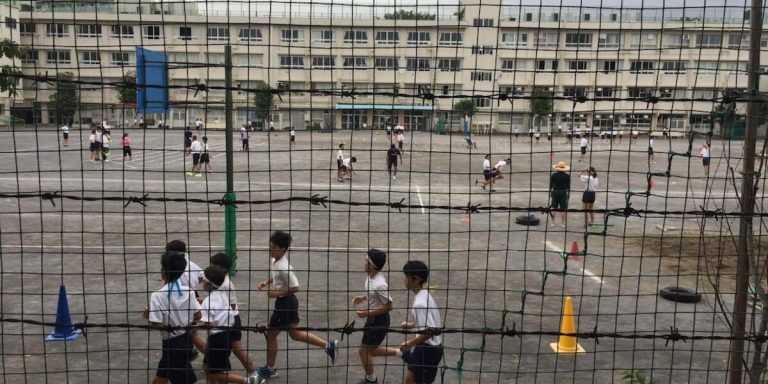Play to Learn: The Transformational Power of Play in Childhood Education
Engaging children in the “play to learn” approach has radical implications for how we understand education, especially during early childhood years. Combining play with instruction brings a multitude of benefits that traditional teaching methods often lack, making it an essential part of developing essential cognitive and social skills.
Activity-based learning serves as the backbone of this method. It challenges young minds by encouraging them to explore different activities designed around specific learning goals. Carefully structured yet flexible enough for spontaneous exploration, these activities stimulate curiosity while fostering profound educational insights – magically transforming their world into a playground where they can experiment and grow.
Did you know?
According to a research study by the American Academy of Pediatrics, playful learning enhances children’s academic outcomes as it stimulates brain areas responsible for memory and complex thought processes.
Exploring the Benefits of Activity Based Learning
The advent of technology has greatly impacted the format of learning, especially for young children. Now more than ever in 2023, educators and parents alike are exploring activity based learning as a way to integrate cutting-edge technological tools into education. This style of teaching seeks not only to leverage innovation but also to foster a ‘play-to-learn’ environment where students engage deeply with their study materials.
Activity Based Learning (ABL) provides an effective platform that encourages children’s active participation using digital resources while enhancing their comprehension skills simultaneously. By adopting interactive technologies like Augmented Reality (AR), virtual simulations, or educational mobile apps within this model, learners can gain hands-on experiential knowledge which aids in reinforcing classroom theories.
Moreover, integrating such tech advancements in ABL methods helps improve problem-solving abilities among youngsters by challenging them with real-time scenarios during playtime itself! Such intuitive engagement fosters cognitive growth and promotes memory retention – making education much more interesting and effective compared to traditional rote-learning techniques.
In essence: As we stride further into our technologically savvy era – harnessing the power of Activity Based Learning could revolutionize early childhood pedagogy profoundly. Its benefits seem endless; from boosting creativity to refining motor skills all while making sure your child is having fun on their road towards an enlightening academic journey!
Unpacking the Connection Between Play and Cognitive Development
In an era dominated by technology, it’s important to acknowledge the fundamental role play has in children’s cognitive development. The concept of “play to learn” is not new; however, activity-based learning modernizes this principle by effectively integrating technological elements.
As parents and educators, understanding how play aids cognition is crucial for curating educational experiences that promote holistic growth among youngsters. So let us delve deeper into unpacking the connection between play and cognitive development.
Firstly, engagement with a task, which could be as simple as building blocks or navigating through a virtual maze on an app – ignites curiosity. This natural interest fosters problem-solving abilities essential for logical reasoning later in life.
Secondly, playing stimulates parts of the brain responsible for memory formation and recall ability. By incorporating strategies such as repeating activities or creating patterns during game-play helps in enhancing these skills logarithmically over time.
Moreover., decision-making skills are often overlooked but they’re pivotal aspects nurtured during unstructured gameplay—whether offline board games requiring strategic planning—or making survival choices within interactive video-game narratives—they all eventually contribute towards developing sound judgement capabilities among kids from early ages themselves.
How “Play to Learn” Enhances Memory Retention and Understanding
“Play to Learn,” an approach gaining traction in the modern education field, is proving itself as a strong tool for enhancing memory retention and understanding among children. By integrating this strategy into activity based learning (ABL), educators can ensure better absorption of knowledge while also encouraging creativity.
One key aspect of “play to learn”, that makes it highly successful, is its inherent nature of being engaging and fun. This keeps children actively involved without feeling burdened by traditional bookish learning routines – they play their way towards acquiring new skills or information.
Moreover, activities like puzzles games nurture problem-solving abilities in young learners. For example: when kids navigate through these challenges successfully on digital platforms, they are unknowingly setting the foundation for improved logic and reasoning competence which will be instrumental later during complex mathematical problems solving sessions at higher grades.
In addition to strengthening cognitive processes such as memory recall and comprehension capacity; playing also promotes social skill development amongst peers through collaborative tasks undertaken within a game’s framework – helping them understand teamwork dynamics even before stepping foot onto professional fields post-school life!
Implementing Activity Based Strategies in Education
The increasing importance of technology in education has shifted the traditional teaching paradigm towards a more hands-on, engaging approach known as activity-based learning. This cutting-edge methodology is built upon the timeless concept of “play to learn,” emphasizing on creating an environment where students are encouraged and guided through interactive tasks to explore new concepts independently.
Activity based strategies in education involve implementing technologies that enable playful interactions while enhancing cognitive abilities. In this digital age, children’s affinity with gadgets can be capitalized for educational purposes. Virtual Reality (VR), Augmented Reality (AR), apps and online platforms bring abstract theories or complex lessons into tangible experiences right at their fingertips – making ‘difficult’ subjects fun and easy-to-understand.
Moreover, teachers play pivotal roles by acting as facilitators rather than just providers of information. They design creative activities aligned with curriculum goals using tech-integrations like coding programs or robotics kits, fostering critical thinking along innovative problem-solving skills among learners amidst their joyful explorations.
While harnessing technology’s potential for effective pedagogical transformation may seem challenging initially; yet it paves way for cultivating nimble thinkers who don’t simply swallow facts but actively participate in constructing knowledge themselves – truly embodying actual essence behind “play to learn”.
Incorporating Game Elements into Curriculum Design
Understanding the dominating role that technology plays in our current society, educators and parents alike have evolved to incorporate innovative means of teaching. One such approach is integrating game elements into curriculum design. This unique method, also known as ‘play to learn,’ aligns with activity-based learning strategies which are gaining exponential popularity.
Play-to-learn concepts leverages on a child’s natural inclination for play and transforms it into an effective educational tool. It offers interactive platforms where children explore and grasp fundamental principles while enjoying games-like tasks.
1) Educating through engagement: Incorporating game mechanics in lessons stimulates curiosity, encouraging learners to engage actively rather than passively consuming information. The use of multimedia tools like videos, audios or animation promotes greater interaction leading to enhanced understanding.
2) Fostering teamwork: Many digital environments require cooperative participation promoting social skills alongside academic capabilities; this not only augments their interpersonal attributes but improves collaborative problem-solving abilities too – providing them an edge in later life situations.
3) Promoting self-learning: The structure of these gamified activities tends toward self-paced progressions allowing students flexibility according to their capability hence fostering independence & personal responsibility towards own education.
Structuring Classroom Environments for Optimal Engagement
In an era where digital technology is making pivotal advances, leveraging it for activity based learning has become a vital strategy in the education field. One integral aspect of this approach falls into structuring classroom environments to optimize student engagement.
The keyword here is “play to learn”. This concept empowers children by providing them with exploratory and experiential opportunities that enhance their understanding. It’s not just about using gadgets or programs; the real essence lies within creating meaningful experiences through these technological tools which seamlessly integrate learning while playing.
So how do we structure classrooms effectively around this?
Firstly, design spaces that promote interaction. Create areas within the classroom where children can gather and interact either with each other or digitally enabled toys and aids. Arranging furniture to form ‘learning islands’ helps facilitate group activities fostering social skills along with crucial problem-solving abilities.
Measuring Outcomes of Play-Centric Educational Approaches
In this era of rapidly progressing technology, understanding the outcomes of play-centric educational approaches is increasingly significant. Using “play to learn” methodologies can offer a wide range of benefits for young learners when seamlessly integrated into their education system.
One way this integration occurs in modern classrooms is through Activity Based Learning (ABL). ABL harnesses elements such as puzzles, games and digital interactions which enable students to garner knowledge while fully engaged in fun activities. This hands-on learning approach aids children in developing critical thinking skills, problem-solving abilities and also fosters creativity.
Measurement-wise, there are numerous ways through which educators gauge the effectiveness of these strategies. For instance; observing behavioral changes like increased participation or improved communication among peers indicates success in embracing ‘play-to-learn’ pedagogies.
A more nuanced measure may include tracking improvement on specific tasks that parallel traditional academic subjects but are learned via playful methods – perhaps an app-based game where mathematical concepts are reinforced.
Thereby integrating technological advancements with old fashioned fun creates an environment conducive not only acadically but holistically too – fostering children’s overall cognitive development whilst making learning highly engaging and productive!
Assessing Academic Performance Through Interactive Learning Metrics
Today’s educators and parents are increasingly opting for play-centric educational approaches, acknowledging the importance of ‘play to learn’ in children’s development. Undoubtedly, this shift requires a fresh perspective on how we measure outcomes; conventional evaluation methods may not be as effective when assessing academic performance through interactive learning metrics.
Firstly, it’s essential to understand that ‘play-to-learn’ is more than just fun and games. It involves engaging activities that help kids develop critical thinking skills while promoting creativity and problem-solving prowess—capabilities highly sought after in our rapidly evolving world.
Technology integration plays a vital role here by providing diverse tools designed specifically for activity-based learning programs – aiding both teaching efforts and assessment processes. For instance, digital portfolios can serve as powerful tools to capture details about each child’s progress over time rather than relying solely on traditional scoring methods or report cards practices.
Instead of focusing only on numerical grades, these digital platforms allow teachers to assess students’ growth across various aspects such as collaboration abilities, cognitive skill enhancement, understanding concepts application capacity among others — effectively reflecting real-world challenges & demands they’ll face later life journey.
Tracking Social and Emotional Growth in Play-Based Settings
“Keeping a close tab on children’s emotional and social progress is indispensable in a play-based learning environment. By incorporating the ‘play to learn’ methodology, educators enable students to explore concepts at their own pace through active engagement with educational activities that ignite curiosity and catapult problem-solving skills.
Differentiate traditional quantitative metrics from qualitative information obtained through observation to understand a child’s growth holistically. Track this growth despite its subjective nature by using these strategies teachers employ:
1) **Observational Assessments**: Teachers often rely on real-time assessments while observing children engage in activity-based learning tasks or interaction with peers.
2) **Child Journals**: These serve as records of student reflections about what they learned during these sessions, expressing both academic understanding and sentiments towards various exercises.
3) **Parental Feedback:** This entity provides additional insight into any changes observed outside of school hours such as increased creativity or improved cooperative behavior within family settings.
4) **Progress Portfolios**: Perfect tools for consolidating all pieces of evidence concerning individual learners’ developmental milestones over time – showcasing their work samples, recorded observations, photos etc., underlining steady transformation via technology integration in education.
Conclusion
In essence, harnessing the power of “play to learn” can transform our little ones’ educational journey into an intriguing adventure where curiosity is rewarded and creativity celebrated. Play-based learning not only aids in cognitive development but also fosters social-emotional skills while ensuring a love for knowledge that lasts far beyond childhood years.
Make use of this transformative approach; let’s empower children to explore as they learn freely in their own unique ways. We invite you to delve further on our website where we source content centered around child education along with countless resources designed specifically for both educators and parents alike. Let’s join hands in shaping future innovators, one playful activity at a time!







